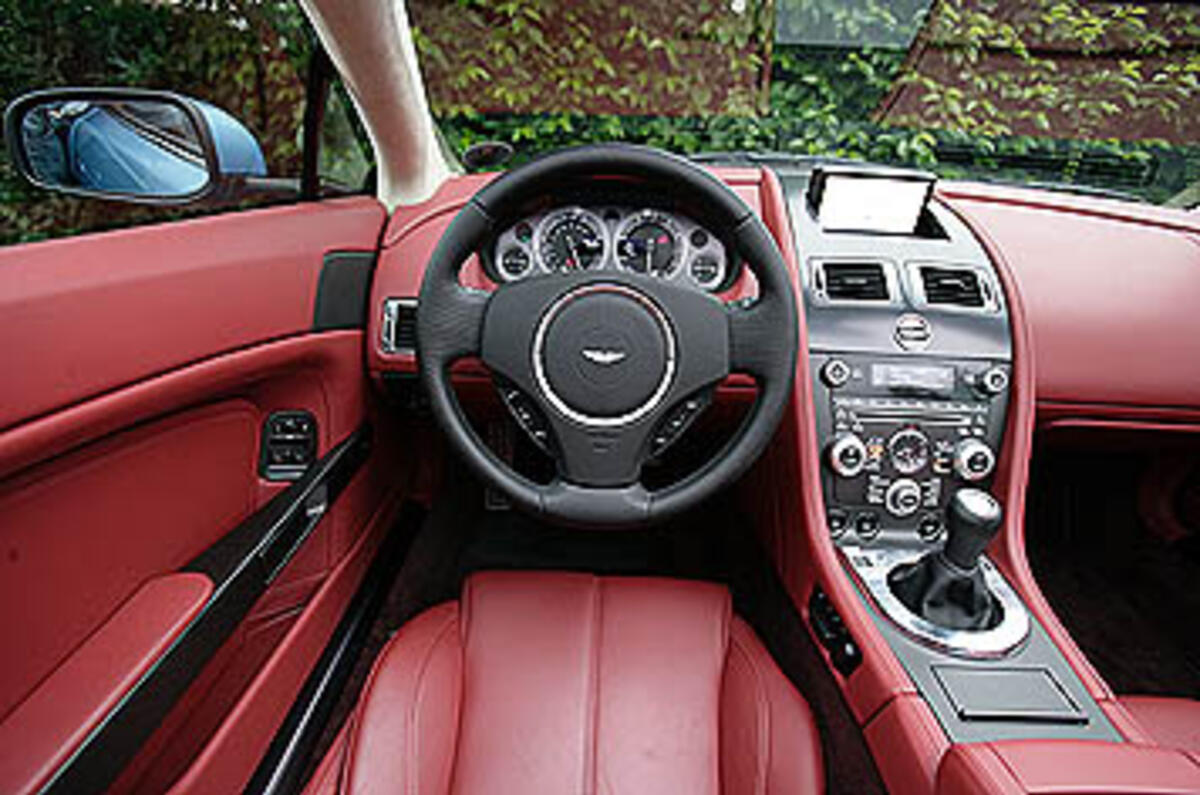What is it?
This is the revised Aston Martin V8 Roadster. Gaydon’s changes to this car are mainly the same as those done to its closed roof equivalent, driven last month; it gets the same larger and more powerful V8 engine, an overhauled chassis and a new cabin fascia.
The updates amount to a less marked improvement on this new Roadster though, because it was for the old Roadster that Aston first upgraded and improved the V8 Vantage’s chassis only fifteen months ago. Largely then, this ‘mechanical revision’ is about applying the advancements made for the old Roadster, and some of those seen on the Vantage Prodrive and N400 interim special editions, to the whole V8 Vantage range; you could say that it benefits the standard coupe more than the open car.
What’s it like?
Open Aston Martins have always been cars that challenge the way many of us like to think about upmarket convertibles. That’s because Aston doesn’t do wafting, low-effort, easy-to-drive boulevard cruisers. You need an altogether more physical approach to gel with one of these beautiful brutes. Mercedes SL drivers definitely need not apply.
The new V8 Vantage Roadster continues the company’s tradition of defying this norm. From the oily heft of the steering to the chunky substance of gearshift quality, you know from moment you start your journey in this car that the enjoyment you’re getting out of it will be directly proportional to the bodily effort you’re prepared to put in.
For all its additional 455cc, the engine in this car’s perfectly proportioned nose feels no heavier than the old 4.3. That’s because it isn’t substantially heavier, Aston’s powertrain engineers having made weight savings in its construction to counterbalance the greater size.
Relative to this car’s driving experience, the power improvement that engine brings isn’t as transformative as its 347lb ft of torque – a 45lb ft gain. Though you still have to work this engine beyond 6000rpm to feel and hear it at its delectable best, it’s got much more clout at commuting crank speeds than its antecedent. On the motorway, you can leave the car in top gear and take advantage of that new-found muscularity to overtake without effort. In the old car, you really had to change down to feel like you were getting your £90k’s worth.
When you do choose to exercise it, however, you’ll find the V8 Roadster’s body more resistant to roll, and much better controlled vertically over lumps and though dips, than its predecessor – particularly if you opt for the £2495 Sports Pack, as fitted to our test car, which stiffens the set-up further still. We didn’t expect to recommend even greater spring and damper rates on an open car, but this one seems sufficiently strong of body, and sporting of character, to sustain them. It’s one of those still rare commodities in the cabrio market: a genuinely fast and successful open-top driver’s car.
Should I buy one?
There’s certainly a lot to recommend it. Aston has work to do before we can give this car top marks, mind you. That steering, which proves so pleasingly weighty at gentler speeds, still makes the car feel a little slow-witted and unwilling on track, and still doesn’t always communicate well enough. The driveline can still feel snatchy and obstinate at times. Though improved, the car’s cabin is still far from a masterpiece of ergonomic, intuitive design and rich, tactile sensation. And there isn’t quite enough headroom for taller occupants with the roof up either.






















Add your comment